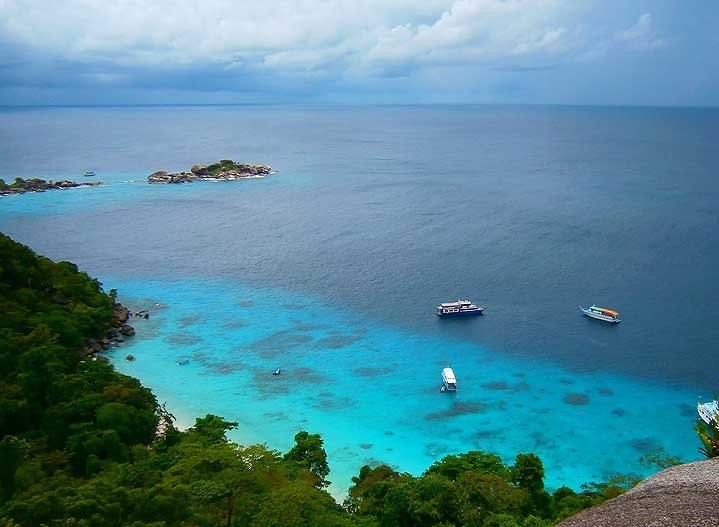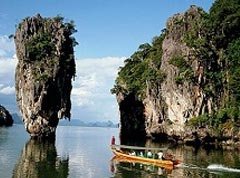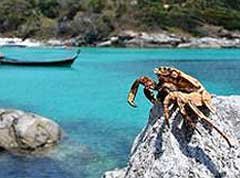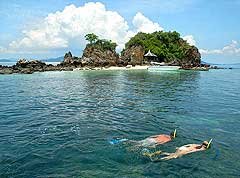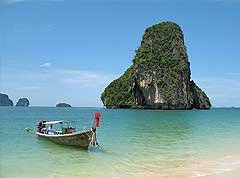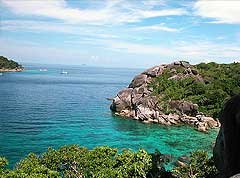
Koh Similan
Has a long curving bay and beneath the waters coral reefs remain pristine. The beach is composed of fine grain sand. At the island's north end are bizarrely shaped big boulders; one looks like a soldier's boot, another is shaped like a sailboat. With a path up to the top, it provides the perfect opportunity for an excellent view.
The islands are undeveloped and unspoiled; numerous species of fish, crustaceans, and other forms of sea-life abound; water clarity and diving are excellent.
Koh Ba Ngu is also called Hua Gah Lok or Skull Island. Beneath the waters, a field of grass and coral appear to be growing in a deep valley with schools of fish everywhere.
Koh Miang Actually two islands connected, they form the second largest land mass in the group after Koh Similan. The National Park Office is here, and there is a fine beach where visitors can stay.
Koh Hu Yong - Offers visitors to the Similans the longest white sandy beach. From November until February sea turtles come up to lay eggs and their tracks may be seen in the sand.
Koh Bon - Famed for its close encounters with manta rays, Koh Bon lies only 18 kilometres to the north of the Similans. Below the surface, great visibility with tropical marine life and dynamic swim-throughs create an underwater seascape. Diving to look at the fish and corals is strongly recommended.
This location can easily be reached as part of your private charter, giving you an amazing opportunity to see manta rays in the Similans. Topside, the fine white sandy beaches offer the perfect platform for a gourmet lunch. A trek up to the view point on island number 8 rewards you with the perfect opportunity to take it all in from above and capture the amazing views on camera as a reminder of the perfect paradise upon your return home.


